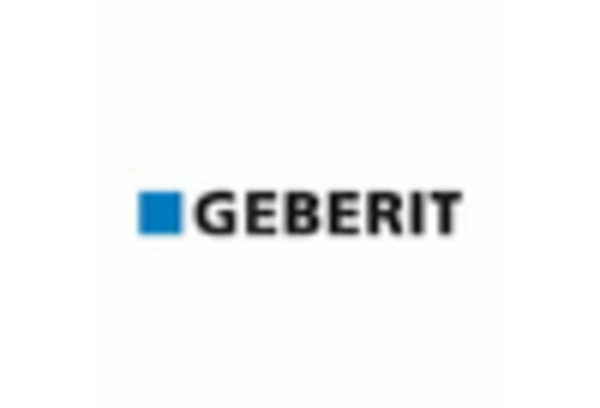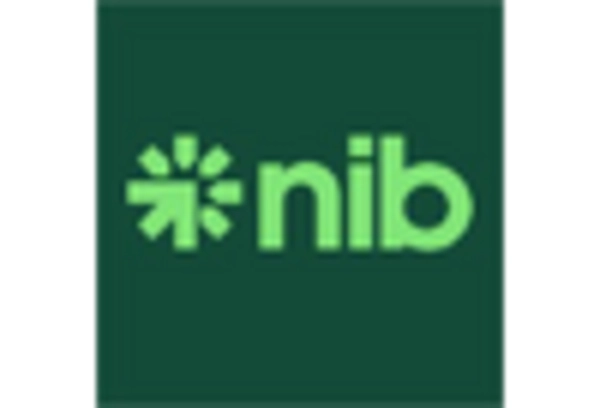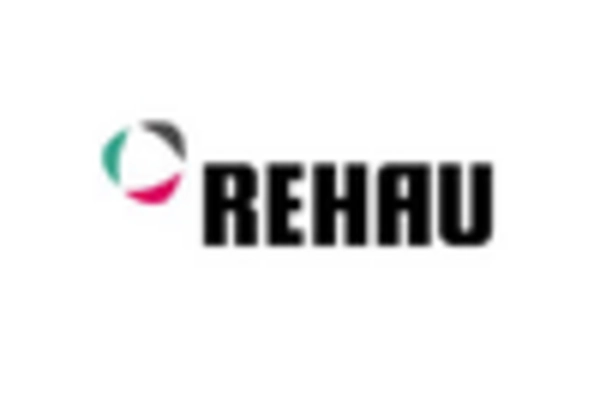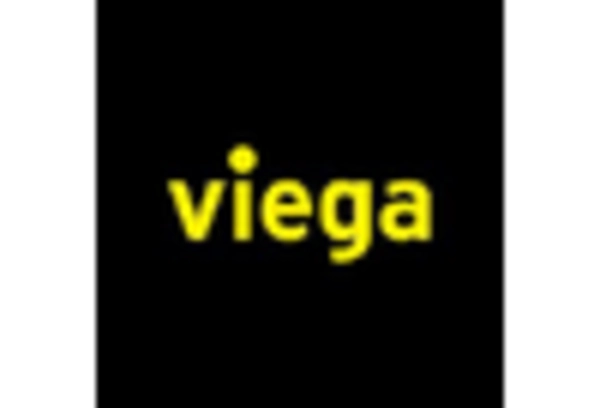Regulatory Compliance
Regulatory compliance is becoming increasingly important within the Plastic Hot Cold Pipe Market. Governments worldwide are implementing stringent regulations regarding the quality and safety of plumbing materials. Compliance with these regulations not only ensures consumer safety but also enhances market credibility. Manufacturers are investing in quality assurance processes and certifications to meet these standards, which can lead to increased operational costs. However, adherence to regulations is likely to foster consumer trust and drive market growth. In 2025, it is estimated that compliance-related investments could account for up to 15% of total production costs in the Plastic Hot Cold Pipe Market, indicating a significant shift towards quality assurance.
Sustainability Initiatives
The Plastic Hot Cold Pipe Market is experiencing a notable shift towards sustainability initiatives. As environmental concerns gain traction, manufacturers are increasingly focusing on producing eco-friendly pipes. This shift is driven by regulatory pressures and consumer demand for sustainable products. The industry is witnessing a rise in the use of recycled materials and biodegradable options, which not only reduce environmental impact but also enhance brand reputation. In 2025, the market for sustainable plastic pipes is projected to grow significantly, with estimates suggesting a compound annual growth rate of over 5%. This trend indicates a robust future for the Plastic Hot Cold Pipe Market as it aligns with global sustainability goals.
Technological Advancements
Technological advancements play a crucial role in shaping the Plastic Hot Cold Pipe Market. Innovations in manufacturing processes, such as extrusion and injection molding, have led to the production of pipes with enhanced durability and thermal resistance. These advancements enable the development of pipes that can withstand extreme temperatures, making them suitable for both hot and cold applications. Furthermore, the integration of smart technologies, such as sensors for monitoring pressure and temperature, is becoming increasingly prevalent. This trend is expected to drive market growth, with projections indicating that the adoption of advanced technologies could increase efficiency in production by up to 20% by 2026, thereby benefiting the Plastic Hot Cold Pipe Market.
Increased Demand in Construction
The construction sector is a primary driver of the Plastic Hot Cold Pipe Market. With urbanization and infrastructure development on the rise, the demand for reliable piping solutions is escalating. In 2025, the construction industry is anticipated to witness a growth rate of approximately 4%, which directly correlates with the increased need for plastic hot and cold pipes. These pipes are favored for their lightweight nature, ease of installation, and resistance to corrosion, making them ideal for various applications, including residential, commercial, and industrial projects. As construction activities expand, the Plastic Hot Cold Pipe Market is likely to benefit from this upward trend.
Rising Energy Efficiency Standards
Rising energy efficiency standards are influencing the Plastic Hot Cold Pipe Market. As energy conservation becomes a priority, the demand for pipes that minimize heat loss and improve thermal efficiency is increasing. Manufacturers are responding by developing advanced insulation technologies and materials that enhance the energy efficiency of hot and cold piping systems. This trend is particularly relevant in regions where energy costs are high, prompting consumers to seek solutions that reduce energy consumption. By 2026, it is projected that energy-efficient piping solutions could capture a market share of over 30% within the Plastic Hot Cold Pipe Market, reflecting a growing awareness of energy conservation.


















Leave a Comment